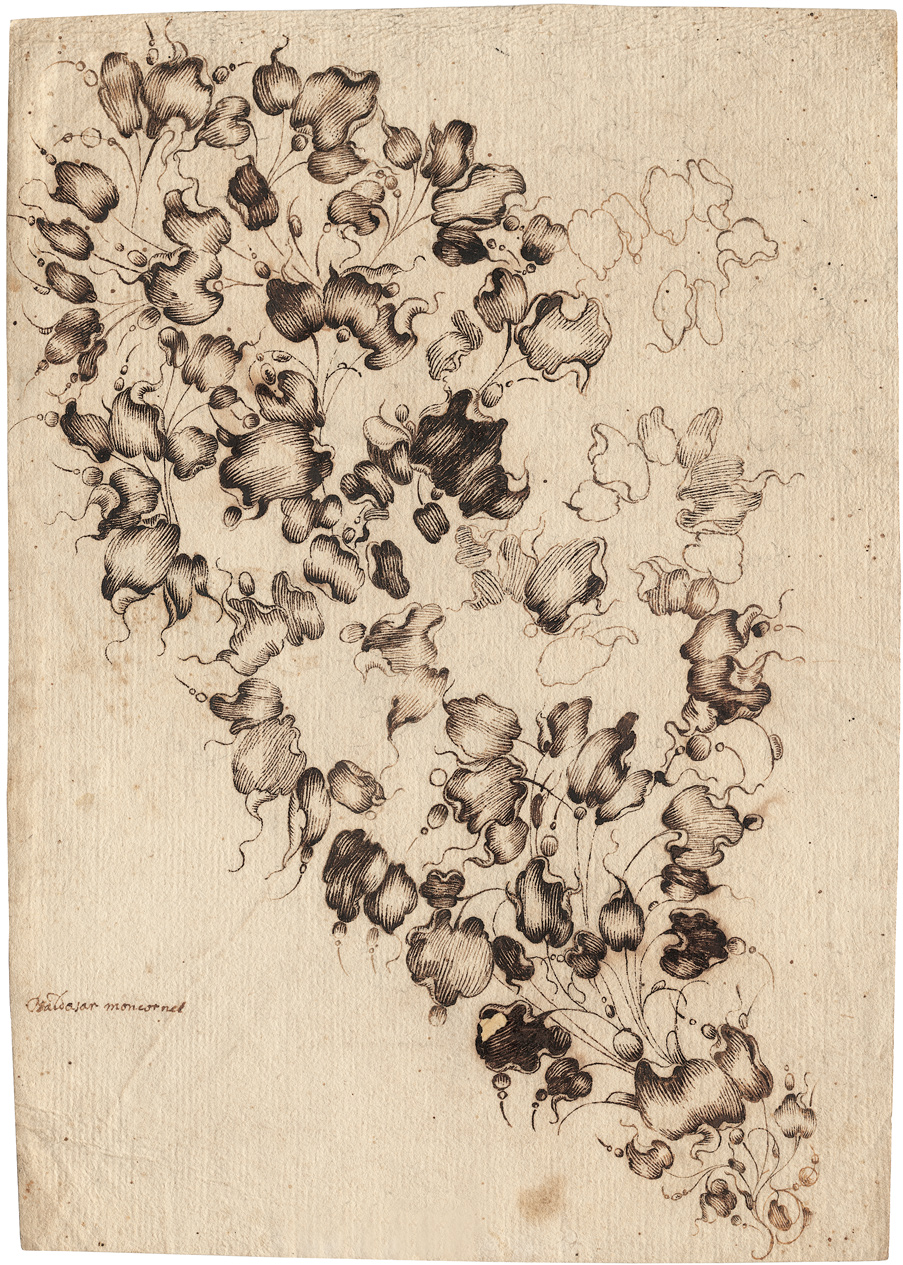Loading the page ...
Pierre Boucquet
(1593–1647, Paris)
After. Ornament sheet with peapod motifs. Pen and brown ink over graphite. 27.9 x 19.8 cm. Inscribed at the lower left Baldasar Moncornet.
An engraving after a design by the Parisian goldsmith Pierre Boucquet (1593 – after 1647, Paris) served as the model for this drawing. It belongs to a suite of six engravings with the title LIVRE DE /TOUTES SORTES DE / FEUILLES POUR SER=/VIR A L’ART D’ORFEBVRIE ... which was published in 1634 by the Parisian publisher Balthasar Moncornet. Only two complete sets have survived, both of which are in Paris (Bibliothèque Doucet; Bibliothèque Nationale). Individual sheets are in the Kupferstichkabinett in Berlin and in the Victoria and Albert Museum in London. (See P. Fuhring and M. Bimbenet-Privat “Le style cosses de pois. L’orfèvrerie et la gravure à Paris sous Louis XIII,” Gazette des Beaux-Arts, January 2002, pp. 1–224, nos. 61–66, all sheets illustrated.)
The unknown draftsman of our drawing copied the fifth sheet from the set, which shows an ornamental, filigrane composition made from leaves in a manner known as the “peapod” style. It is a study by a goldsmith, who probably wanted to train himself in this style by copying the engraving, or intended to use the model as a starting point for a work of his own. Unlike the engraving, the drawing has remained unfinished. The spelling of the name “Baldasar” might suggest an Italian or Spanish artist, since this spelling was not common in France at that time. This type of study drawings is, according to Peter Fuhring, of great rarity. The drawing was executed around the time that Moncornet’s engraved set was published, showing the popularity of the designs of Parisian goldsmiths during the second quarter of the seventeenth century in Europe.
I would like to thank Dr. Peter Fuhring, Paris, for his valuable information concerning this drawing.
